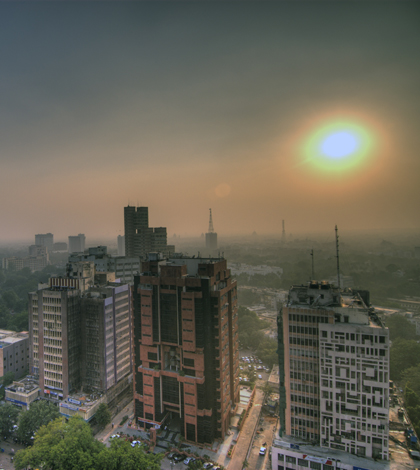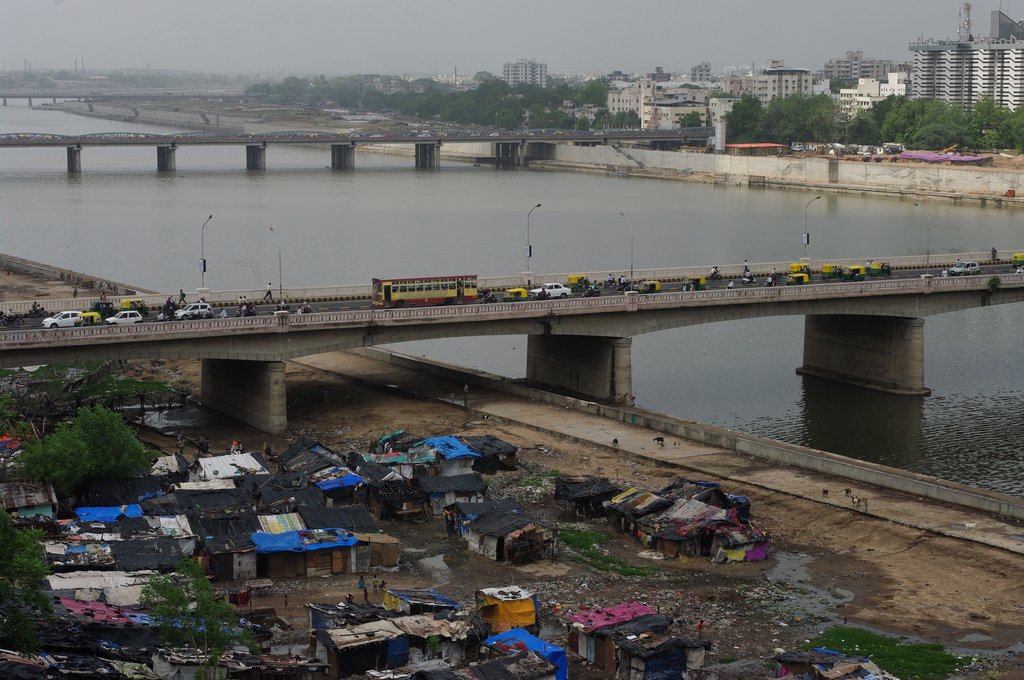India study: Public opinion trumps environmental regulations in causing change

Smog in the skies of Delhi, India (Credit: wili hybrid, via Wikimedia Commons)
Researchers at Harvard and the University of Chicago say that public opinion and action are more useful than governmental regulations for bringing about environmental change in some cases, according to Phys.org. They expand on the opinion in a study recently published in the journal American Economic Review.
The researchers looked at India’s data on air and water pollution at a city level. By looking at news trends and levels of civic engagement, they charted public actions on specific environmental issues.
“We find that when it comes to enforcing its strong environmental regulations, India has a mixed track record,” said Michael Greenstone, economist at the University of Chicago and study co-author, to Phys.org.
Air quality laws, like ones requiring cars to have catalytic converters, were found effective at reducing air pollution in India. But those passed to increase the country’s water quality didn’t appear to do much to make it cleaner.
So the researchers wondered: Why did air quality regulations work when those enacted for water quality failed?
A media analysis showed that large newspapers in the country like the Times of India had reported on air pollution more, with scientists noting that stories on water pollution were published three times less often than those on air quality. Indian citizens, as well, pushed the country’s Supreme Court to get tougher on those breaking air quality regulations.
“Our conclusion is that the relative success of the air regulations is due to a greater demand for improvements in air quality by India’s citizens,” said Rema Hanna, associate professor at Harvard’s Kennedy School of Government to Phys.org. She compiled data for the study. “This demand seems to have prodded government into action.”

The Sabarmati River, one of the most polluted in India, flows through the city of Ahmedabad. (Credit: Emmanuel DYAN, via Flickr/CC BY 2.0)
One new result of that push is the launch of a new index to keep track of air quality changes across India, according to the Associated Press. The index will cover eight major pollutants and rely on air monitoring sensors installed in major cities to measure concentrations of black carbon, soot and other particulates.
So when the public demands them, environmental changes appear to be more likely in India. The findings are likewise encouraging for citizens in other developing nations hoping to effect change.
“We can also draw from these results that no matter what climate deals are worked out internationally, India seems unlikely to significantly reduce greenhouse gas emissions unless its people consider climate change an urgent issue and strongly call for action,” Greenstone told Phys.org.
Top image: Smog in the skies of Delhi, India (Credit: wili hybrid, via Wikimedia Commons)





0 comments